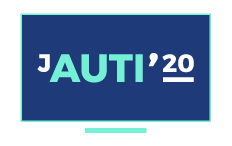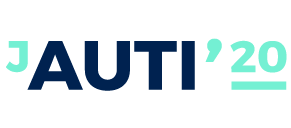
14:00 | Usability and UX Evaluations
Chair: Jorge Ferraz de Abreu
Uma proposta de ferramenta de avaliação de interfaces de interação para TV Digital
Raoni Kulesza, Rafael Moura Toscano, Richelieu Costa, Jaqueline Donin Noleto, Gabriel Aires Moreira, Francisco Medeiros, Carlos Dias
Abstract. Este trabalho apresenta a especificação e avaliação inicial de uma ferramenta de testes de acordo com padrões de projeto de interação e heurísticas de plataformas de recepção de TV Digital, tais como receptores de TV terrestre e/ou satélite, integrados ou não com redes IP (como por exemplo, o padrão 10-foot-UI). A solução proposta tem dois módulos principais. O primeiro é representado por uma aplicação Web utilizada para o gerenciamento dos registros e acompanhamento dos relatórios, onde é possível utilizar 21 categorias e 49 métricas de avaliação que podem ser gerenciadas (editadas ou expandidas) associadas para uma avaliação (teste) de um determinado produto ou família de produtos cadastrados neste módulo. O segundo é uma aplicação móvel que utiliza-se de uma estratégia de navegação com wizards, permitindo que direcione o testador em cada uma das etapas da execução de uma avaliação de produto, assim como geração e análise de relatórios.
Keywords: DTV, 10-foot-ui, human-computer interaction, user interface evaluation
Canal Social: Desenvolvimento e avaliação de uma aplicação de TV Interativa voltada para serviços sociais no contexto de governo eletronico brasileiro
Raoni Kulesza, Rafael Moura Toscano, Kellyanne Alves, Richelieu Costa, Madrilena Feitosa, Guido Lemos
Abstract. Este trabalho apresenta o desenvolvimento de uma aplicação de TV Digital denominado de “Canal Social” e elaborado pela UFPB em parceria com o governo federal do Brasil. O objetivo da solução foi aprimorar a comunicação entre o poder público e os beneficiários dos programas sociais oferecendo conteúdos audiovisuais com informação, entretenimento e prestação de serviço a essa camada da sociedade. Adicionalmente, também são apresentados a metodologia e resultados de uma avaliação utilizando testes de campo do uso do aplicativo por usuários com o intuito de mapear os perfis que constituem uma possível audiência da aplicação e compreender melhor a experiência desses usuários.
Keywords: TV Digital Interativa,SBTVD, Ginga, governo eletrônico, bolsa família.
UX Evaluation of an iTV natural language interaction system using an open methodology
Juliana Camargo Jorge Abreu, Rita Santos, Pedro Almeida, Pedro Beça, Telmo Silva
Abstract. A significant number of smartphone applications have emerged to interact with Smart TVs, set-top boxes or media players, in which voice interaction features started to be common. Voice commands and especially natural language interaction (NLI) may allow an easier navigation on TV systems as well as agile access to linear or non-linear content (made available by the TV opera- tor), avoiding the need to navigate between structured menus or to resort into text insertion, which is always a difficult task when using remote controls. However, the User eXperience (UX) of current NLI systems for the TV domain is not yet satisfactory, which leads users to still not consider this type of interaction as a real substitute of the remote control. In this sense, the main purpose of this pa- per is to present the results obtained from the UX evaluation of an NLI sys- tem specifically developed for the TV domain, that was provided via a mobile app. The results of the evaluation, carried out in a real context of use and sup- ported by an open methodology which takes into account important issues such as usability and motivational levels, showed that the system allowed users a fluid experience. This empirical study also aims to provide contributions to promote natural interaction with TV systems, offering a more dynamic way to enable voice interactions.
Keywords: User Experience, Voice Interaction, Television, Mobile Application
Mobile Video App for English Teaching/Learning: Testing a Prototype
Tiago Carvalho
Abstract. The popularity of Mobile Assisted Language Learning, promoted by the well-established advantages of audiovisual content consumption habits for autonomous learning, has increased during the last decade. At the same time, there is regular discussion on the ability of Online Collaborative Platforms (OCP) to respond to the educational wishes of teachers and learners, and simultaneously increase their audiovisual consumption habits when these are aimed at improving their foreign language teaching and learning proficiency. Bearing this in mind, this chapter focuses on a part of quantitative data of a Research- Development doctoral project, where a prototype of an OCP was developed and tested with teachers of English as Foreign Language and learners of English for Specific Purposes. The pre-trial data and the post-trial data provide data that led to a conceptual validation of the proposed OCP, and, the main focus of the pa- per, pinpoint some behavioral shifts that led to the conclusion that this OCP could have the potential to change AVC’s viewing, sharing and cataloguing habits. This would theoretically mean an increase in consumption of videos to support teaching and learning of English, in autonomous scenarios.
Keywords: Audiovisual Consumption; Online Collaborative Platforms; EFF; ESP; Autonomous learning.


